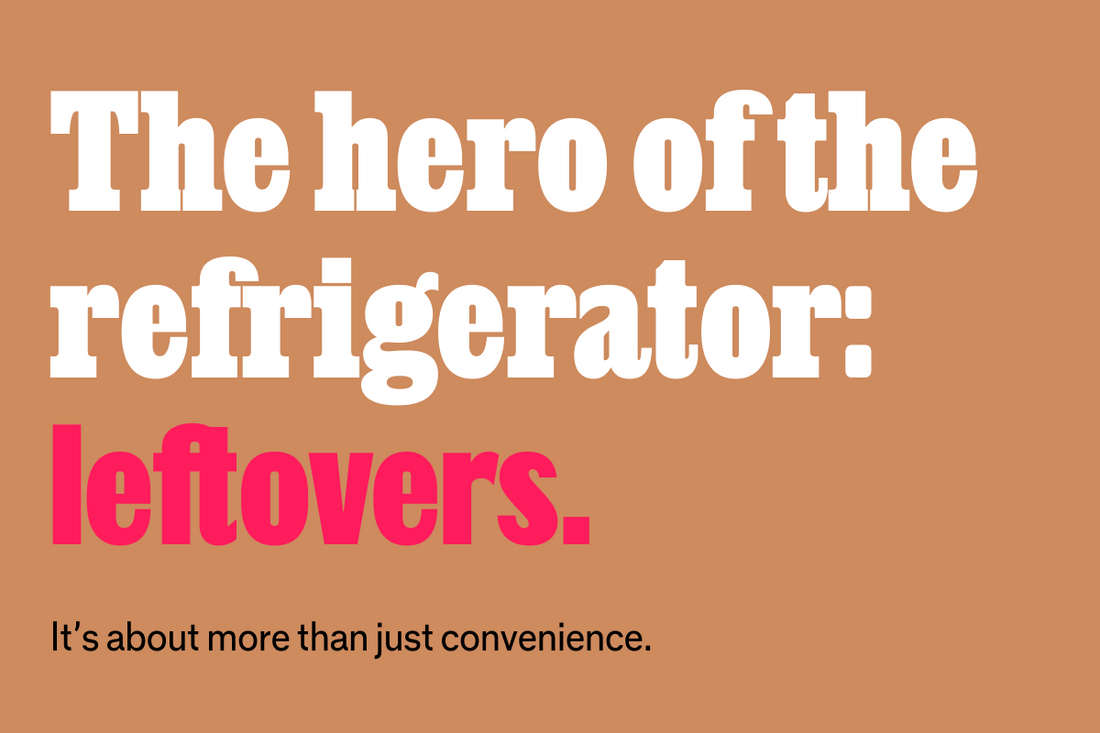Leftovers are about more than just convenience.

Here at HVM, we talk a lot about the importance of being flexible in cooking. We think it’s a central part of supporting small farms, you know, the ones that can’t produce exactly what that mouth watering New York Times recipe calls for at the click of a mouse. The great thing is, for most of human history, chefs have had to be flexible anyway, this what-you-want-when-you-want style of cooking is a relatively recent phenomenon, at least for the general population.
Today, we’re going to talk about one of the most powerful tools in the flexible chef’s arsenal: the delicious food she already cooked, leftovers.
Salting, curing, smoking, canning and jarring are all excellent ways to preserve the harvest for times when food was scarce, but they aren’t methods of storing a meal when a chef’s eyes are bigger than her family’s stomach. These methods tend to create brand new ingredients all together (salted ham is a totally different beast than fresh ham) but, by the end of the 19th century, ice boxes became a mainstay in most American middle-class households and mechanical refrigerators came shortly after.
The really cool thing about keeping food cold was that you could take the exact meal you ate one night (no salting, no smoking, no jaring) and eat it again, and again...and again. Leaps in efficiency and growth in the middle class at the turn of the 20th century meant that Americans were spending a smaller percentage of their income on food while being able to obtain food more easily than ever before.
In an article in The Atlantic, Helen Veit details how the ease of reheating yesterday’s meals gave rise to whole cookbooks dedicated to leftovers. Leftovers were so jam packed with economic and time savings that when WWI hit, the U. S. Food Administration put out campaigns calling leftover usage a patriotic duty! Their slogan was “Food - Don’t waste it” (it’s a so-so slogan, but the idea holds water).

After the war, food was plentiful and zeal for leftovers waned, but then The Great Depression hit and the US had a taste for leftovers that lasted until the 60s. During the thirty years of what Veit calls leftovers “Golden Years”, home cooks really got creative with yesterday’s meals even going so far as to blending carrots and reshaping them into… well carrot looking piles.
During the 60s, most Americans had enough money that food waste wasn’t a concern for them. Food was cheap and plentiful, variety abounded and so leftovers lost favor. Though, all things work in cycles and leftovers have made their way back into our hearts. As Americans live increasingly busy lives, big meal prep days have taken a surge and more and more of us are using leftovers to fuel the week. We can’t be the only ones who enjoy a curry that has had a few days to sit in the fridge letting the flavors work their magic.
Now, all of this is not to say leftovers were invented in the 19th century US, in fact, many dishes now cooked in their own right are believed to have come from leftover origin. Paella, the spanish rice and seafood dish named from the pan it’s cooked in (a paella pan) is said to have originated with servants of the Moor kings who took home the leftovers from royal banquets, and mixed them with rice.
Shepherd’s pie (vegan link, sorry, not sorry), wouldn’t exist if it weren’t for the Sunday roast. Scotish peasants would have a roast on Sunday, but needed something to do with all the juices and leftover bits, why not cover them with potatoes? Technically, a true shepherds pie is made only with lamb, and everything else is a cottage pie.
Ever have stale tortillas? Well, I haven’t either, but I’m told it happens and Chilaquiles were the solution. Ancient aztecs would take stale tortillas, fry them with chiles and tomatoes and then pile on the cheese.
Even Fried Rice is a perfect leftover dish. Chinese peasants would use their old veggies (the ones that were too good for the pigs) and yesterday’s rice to make quick work for a meal after a long day of work.

One thing that we’ve learned about cooking from our chef friends is, a meal comes together a lot quicker if you have parts of it already ready to go. The concept is called ‘mise en place’ which is french for “Everything in its place”. The less thinking you have to do in the moment, the more you can enjoy the meal to come (thanking your past self).
If we’ve said it once, we’ve said it a thousand times, heroes have hunks of meatloaf in the fridge, because heroes have meatloaf sandwiches.


